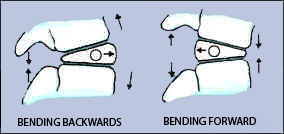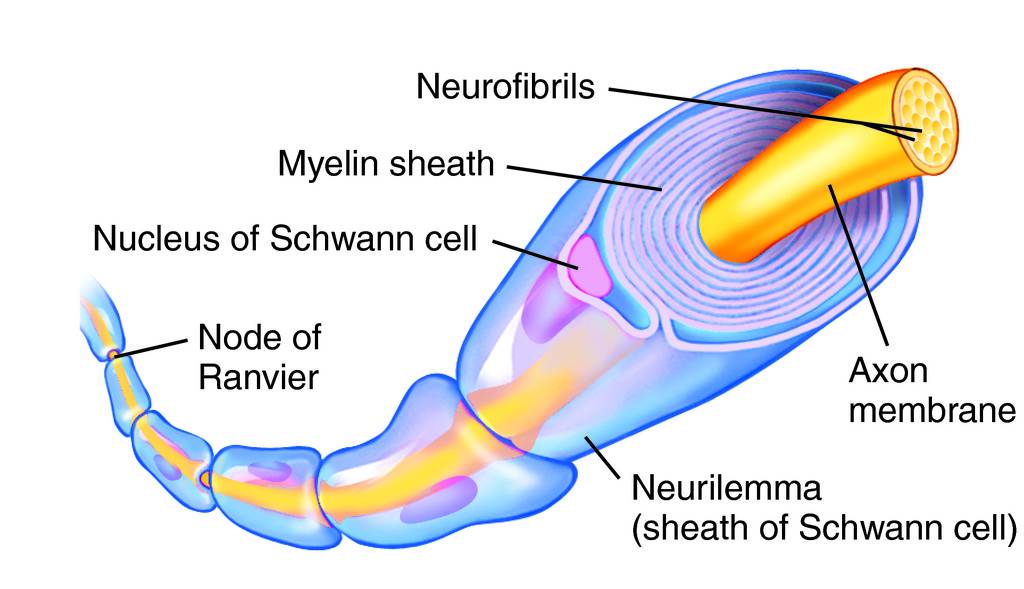Understanding how the discs work to gain nourishment
Discs are gel-like bodies which perform a very important role in helping your back work efficiently. One of their principal functions is to act like shock absorbers and insulators between the blocks of bone (or vertebrae) which go to make up your spine. Not only do your discs have to cope with constant pressure, they also absorb shocks, compression and twisting stresses and have to allow

Each disc consists of a semi-fluid centre or nucleus surrounded by semi-elastic rings of cartilage. These rings of cartilage are made up of collagen fibres - the tough substance that ties all your tissues together. Because of its elasticity and semi-fluid nature, the nucleus (central core) of your disc allows any compression forces on the spine to move evenly in all directions thus spreading the load.
|
|
Bending forward the nucleus pushes the nucleus backwards (i.e. Disc bulge) and as you bend backwards it moves forward. That is why for Discogenic pain extension exercises like Cobra are beneficial. Your discs are always under constant pressure. In the early 1970's Professor Nachemson of Sweden measured the pressure in the lumbar discs of a group of "volunteer?" students. It was found that even when you are lying down there is still considerable internal pressure. When sitting and particularly when sitting and leaning forward without back support, the pressure increases markedly. In other words more muscles are working and further compressing your spine when sitting than when you are standing upright.
PRESSURE INSIDE THE DISC IN VARIOUS POSITIONS
PRESSURE INSIDE THE DISC IN VARIOUS POSITIONS
White areas of the graph above the broken line show body positions in which fluid is squeezed out of your disc. The shaded areas (below) are ones in which fluid is sucked in.
The reasons why there is constant, internal disc pressure are as follows:-
A column of blocks of bone separated by elastic mobile joints would tend to be unstable and flop about. To add the necessary stability these blocks of bone (vertebrae) are joined to each other by strong semi-elastic ligaments.
Because these ligaments are under constant tension they impose a compression force on your discs.
To balance this force there must be some way of maintaining pressure inside your disc otherwise it would collapse. To understand the source of this internal pressure it helps to know something about -
How your discs get nourishment
- Chemical structure of your discs are about 85% water and contain mainly in the central core or nucleus. Within this fluid there are the specialized cells called 'chondrocytes'. Their function is to manufacture a chemical compound known as proteoglycan - the principal ingredient of the 'lubricant' that allows our joints to move freely. Chondrocytes are living cells and, like all other living cells in your body, require regular nourishment and a means of ridding themselves of waste products.
Unlike the majority of other cells, however, your chondrocytes cannot receive nourishment from the blood supply because of the extreme pressures under which they operate. They use instead a unique system of movement which helps maintain the different electrical potentials - drawing in oxygen and pushing out waste products.
The outer walls of the disc and cartilage end plate act as a sort of selective semi-permeable membrane. This allows water and chemicals to pass through, including those chemicals necessary for your chondrocytes to function. At the same time waste products of this process pass out.
At the center of the disc the concentration of essential nutrients is only just great enough to maintain your chondrocytes in reasonable health and the waste disposal action is only just coping. Without adequate diffusion, assisted by movement, the chondrocytes can easily become starved.
Movement is the best aid to this diffusion. Your discs were designed for this modern day sedentary lifestyle. One position for too long, whether sitting, standing or lying down is no bueno. Take micro-breaks every 15 minutes and nourish your chondrocytes. You back will thank you.
In Health,







